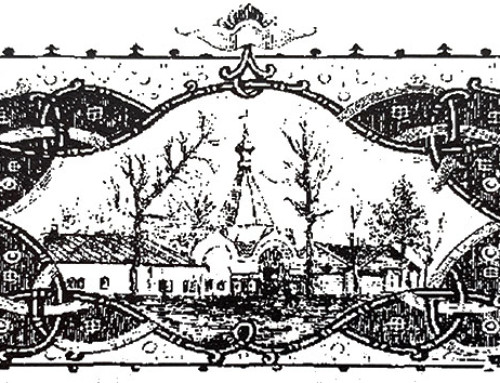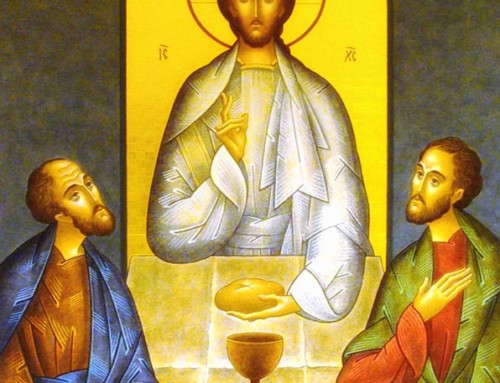Once the homily is concluded, the Eucharistic Liturgy today continues with the ektene properly so called, but nowadays referred to as the “augmented litany” since most of its petitions are answered with a triple Lord have mercy! The Greek word ekteneia means zeal and earnestness, and comes from the verb ektenino, “to stretch out.” The smaller litanies are more properly called synapte, from the verb which means to tie together, or fasten.
At one time the church discipline required that all those who would not, or could not, receive Holy Communion had to leave the church before that. Various groups were called to prayer, prayed over and then dismissed. There were more categories of people dismissed before Communion than we might imagine today, including people doing public penance, people thought to be possessed by evil spirits, and so on.
Today, after the augmented litany, the litany for the dead follows if the rank of the day permits. Following that, we still have in our prayer book the litany for the catechumens, those preparing for baptism, because they also had to leave before Communion. Following these, in our service book there are two prayers for the believers still in church, joined by a synapte. The first prayer was said silently by the bishop during the reading of the petitions, and then the second prayer was said aloud at its conclusion. It is clear that this second prayer was for pardon and preparation for sharing in the tremendous Mystery of the Eucharist.
Cугуба Єктенія: «Тоді ми усі стоятимемо і молитимемося разом. »
Після проповіді, Літургію продовжує Сугуба Єктенія, прохання якої завершуються потрійним: «Господи, помилуй!» Грецьке слово: «Єктенія» означає ентузіазм та зусилля. Правильніше було б називати єктенію, від дієслова, яке означає зв’язати разом, або закріпити. Свого часу церковна дисципліна вимагала, щоб всі ті, хто не хотів, або не міг причащатися, повинні покинути церкву до цієї частини Літургії. Різні групи були покликані до молитви, а потім відходили.
Існувало також більше інших категорій осіб, які повинні були залишити Літургію перед причастям, ніж ми могли собі уявити сьогодні, в тому числі людей, які були публічними каянниками, люди, які вважалися одержимі злими духами, і т.д.
Сьогодні, після сугубої єктенії, слідує єктенія за померлих, якщо cлужиться Літургія за померлих. Після цього, в нашій літургічній книзі ми маємо єктенію за оглашенних, за тих, хто готується до хрещення, тому що вони також повинні були залишити храм перед Причастям. Після цього, в наших служебниках є дві молитви за вірних, які є в церкві, у формі єктенії. Перша молитва була сказана тихо єпископом під час читання прохання, а потім друга молитва була сказана вголос на кінець. Очевидно, що ця друга молитва була про прощення та достойну участь у величному Таїнстві Євхаристії.



